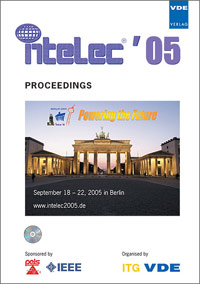Lifetime Effects of Voltage and Voltage Imbalance on VRLA Batteries in Cable TV Network Power
Conference: Intelec '05 - Telecommunications Conference - 27th International Telecommunication Energy Conference
09/18/2005 - 09/22/2005 at Berlin, Germany
Proceedings: Intelec '05 - Telecommunications Conference
Pages: 6Language: englishTyp: PDF
Personal VDE Members are entitled to a 10% discount on this title
Authors:
Kuhn, Brian (SmartSpark Energy Systems, Champaign, Illinois, USA)
Spée, René (Alpha Technologies, Bellingham, WA, USA)
Krein, Philip T. (University of Illinois, Urbana, Illinois, USA)
Abstract:
Charge balance is known to be an essential consideration in series valve-regulated lead-acid (VRLA) battery applications. Conventional applications use passive equalization to maintain balance: periodic overcharge sequences. Active equalization uses external circuits to enforce charge balance without the need for overcharge. There is little published data to show the potential value of active equalization in float applications such as those common in telecommunications. Measured voltage balance data for a population of 2538 batteries in a set of 846 series strings are reported. Batteries showed a clear pattern of degraded life for charge voltages that differ by more than about ±0.1 V from an optimum charge voltage chosen to minimize positive grid corrosion. Passive equalization was able to keep about 63% of the batteries in the population within this range. The remaining 37% showed life degradation in a direct relationship to the charge voltage error. It is estimated that active equalizers capable of balance at the level of about 15 mV/cell would have maintained all the batteries near enough to the optimum range to avoid life degradation. An economic analysis suggests that active equalization would reduce tangible battery and associated maintenance costs by 31-36%. There would be additional economic benefits that are more difficult to quantify.


